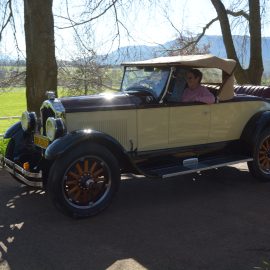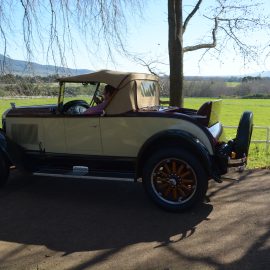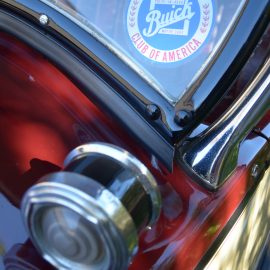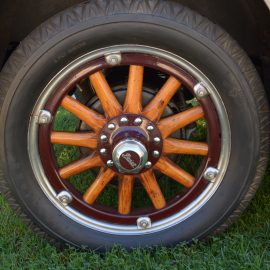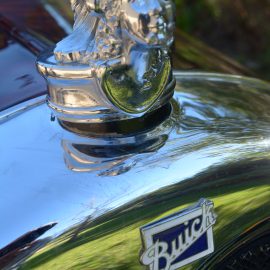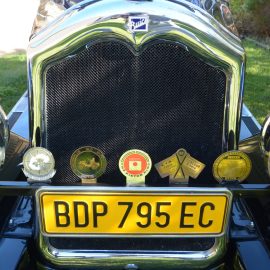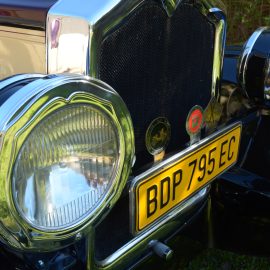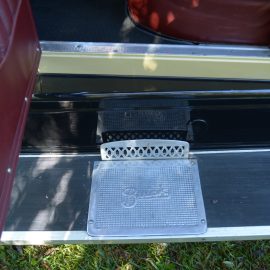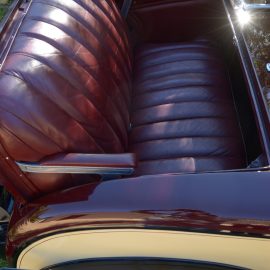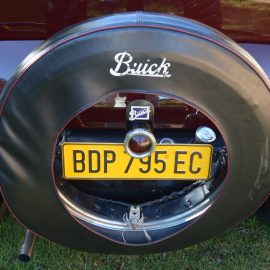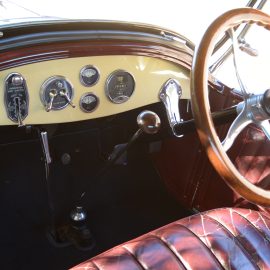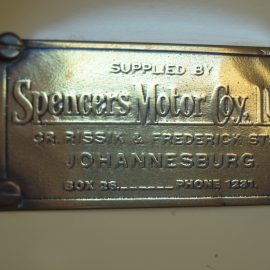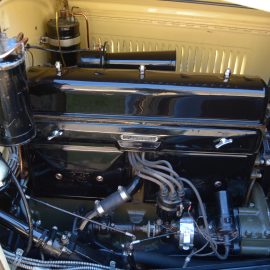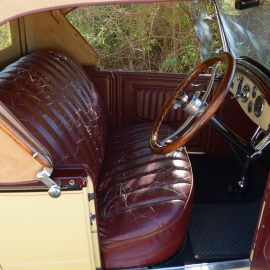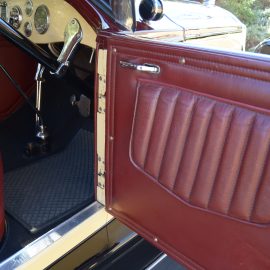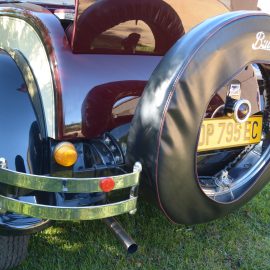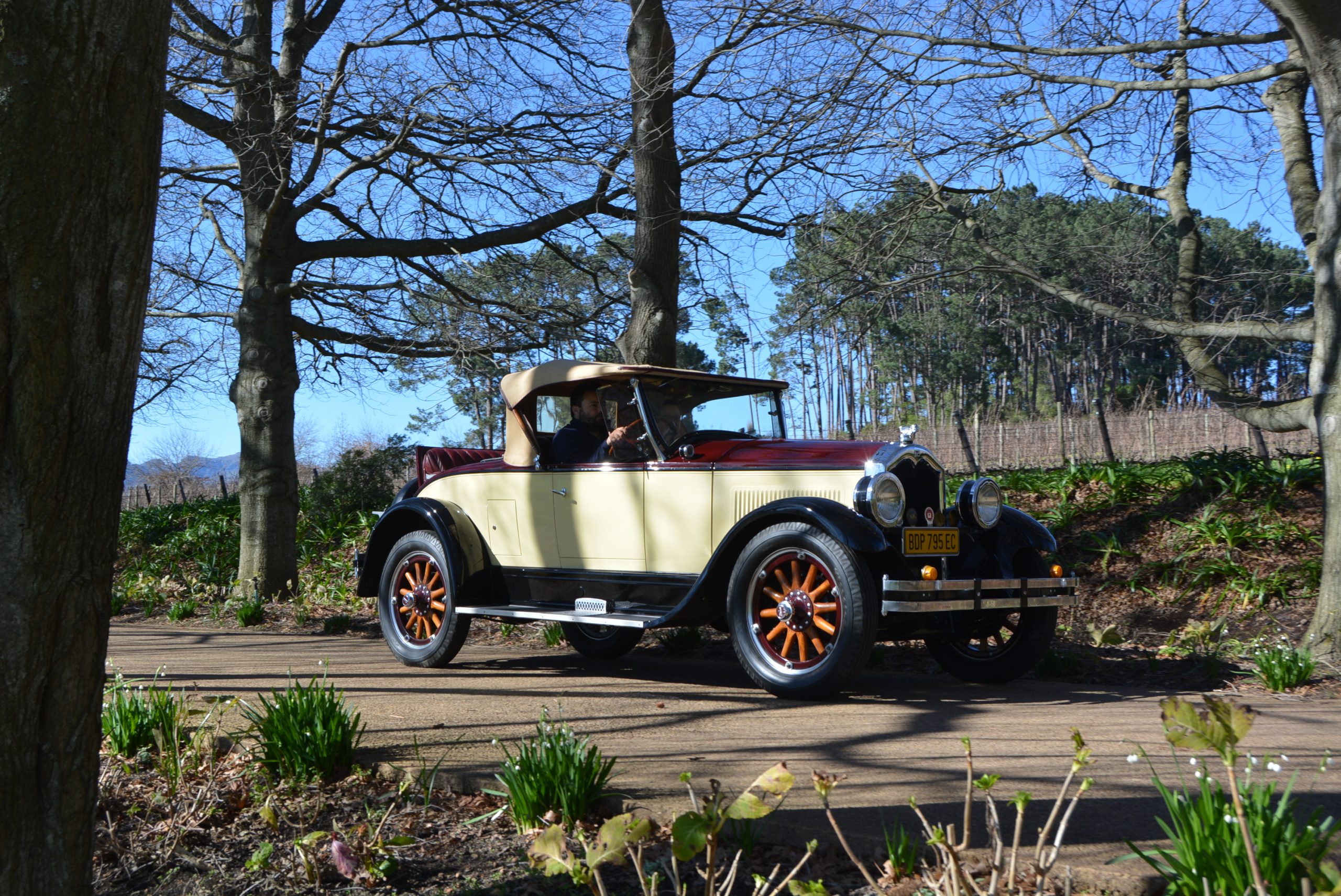
01 Aug Anniversary Celebration: 1927 Buick Standard 6 Sport Roadster
Mike Monk looks at one of FMM’s hidden treasure, a sporty 95-year-old roadster and takes a ride in a dickey…
One of the vehicles that performed demonstration runs around the quad on the museum’s annual Fathers’ Day special festivities on June 18 was a particularly attractive 1927 Buick Standard 6 Sport Roadster. It is a car that had somehow stayed ‘below the radar’ in my long-running dealings with FMM’s automobile collection, so I thought it was time that it was brought out into the limelight.
The car was originally sold by Spencer’s Motor Company from its premises on the corner of Rissik and Frederick Streets in Johannesburg, and a model number (2724X) plate on the bodywork defines this particular car as a Deluxe version of the Sport Roadster. Years later it came to the Franschhoek Motor Museum as part of the late Bertie Bester’s collection that, in turn, formed the basis of FMM.
Buick was started by automotive pioneer David Dunbar Buick in 1899. It was among the first American marques, and was the company that established General Motors in 1908 after GM founder William C Durant had served as Buick’s general manager and major investor. In the North American market, Buick is a premium automobile brand, positioned as an upscale luxury car below the Cadillac.
The Buick Standard Six Series 20 was manufactured by Buick at what would later become known as the Buick City factory on Hamilton Avenue in Flint, Michigan, and was the junior model to the Buick Master Six between 1925 through 1929. It shared the GM A-platform with Oldsmobile, Oakland and Chevrolet. The Standard Six evolved from the earlier Buick Six when the Buick 4-cylinder was cancelled in 1925, and was the most popular Buick sold.
For the 1927 model year, little was changed from the previous year’s models. A one-piece windscreen was fitted on all open models (nine different body styles were offered), and the dashboard now had the rotating speedometer placed directly in front of the driver, and indirect dashboard lighting was standard. On the mechanical side, the cooling system was now thermostat controlled, new motor mounts were fitted along with a counterbalanced crankshaft, a heavier flywheel, “vacuum ventilation” for the crankcase and a torsional balancer, all of which enabled Buick to describe its engines as “vibrationless beyond belief”. Standard models – there was a similar but upspec and more powerful Master model range too – continue to have the fuel gauge mounted on the fuel tank.
On the downside, the engine was noisy, due principally to excessive valve train commotion. Using closer-than-factory specified valve clearances helped reduce the hubbub, but this put reliability at risk. With the aid of some noted engineers of the time, the problem was found to be caused by the pushrods deflecting when the valves closed. Eventually, redesigned camshaft profiles cured the problem. Air cleaner resonance was also contributing to the noise problem, and its chamber shape was changed to eliminate the problem.
The engine is an overhead valve 3392cc in-line six producing 63 bhp (47 kW) at 2 800 r/min and 190 N.m of torque. A three-speed sliding gear transmission has a ‘back to front’ gate – the shift pattern is over to the right and up for reverse, straight down to first, across to the left and up for second, then down for third. Wood-spoke wheels with detachable rims are fitted and mechanical brakes are used all round.
In what the press described as “the polychrome year of automobile history”, the 1927 Buicks were offered with a new range of body colours made from Duco nitrocellulose lacquer. On open cars, a one-piece windscreen was introduced along with cowl ventilators, and a winged gothic goddess radiator cap appeared on the Sport Roadster.
Along with having to remember the odd gearshift pattern, the tiny accelerator pedal is tucked down low between the brake and clutch. But the two seater-cockpit is relatively small and the combination of the low bottom edge to the dashboard, the size and closeness of the pedals around the base of the steering column, and the positioning of the gear lever precluded my long-legged frame from adopting a safe driving position, so for driving impressions, workshop technician JP du Plessis took the wheel, Wendy Monk occupied the passenger seat while I sat in the dickey seat for a ride around the L’Ormarins estate.
JP noted that the engine “feels strong, torquey and smooth. The gears, being back to front, make it interesting to drive, so need to be mindful. Steering is strong, firm with the wheel close to one’s chest, making turns hard work. Should be a good car to cruise in on open roads. Overall, a special driving experience and you can feel Buick’s dedication to quality”. Wendy felt the car has a nice aura; “Feels grand to ride in”.
What a lot of fun! Being a bright but cold Cape winter day, the hood was left erect which may have contributed to the almost total lack of wind turbulence I experienced behind, despite sitting high up – no ‘bugs in the teeth’! Although all the mechanical changes to the engine had made the engine heavier, which affected the car’s performance a little, the car certainly moved along with ease. Being in such close proximity to the exhaust, the motor’s healthy crackle accentuated the sporty riding experience. The smile on JP’s face showed that he too was enjoying the drive, finding the car possessing that classic vintage feel.
Buick production for 1927 was 235 009 units (no less than 31 different model/body style/trim level options were offered!), which made the marque one of the strongest brands in the US market, accounting for close to 10% of the market. Of the total, the Standard Deluxe Sport Roadster accounted for just 271 sales, making this example a rare model. It sold in the US for $1195.
Although being disappointed at not being able to drive it myself, the Buick’s appeal instigated at FMM’s Fathers’ Day parade was not diminished. It lived up to all expectations – and I thoroughly enjoyed my first ‘dickey seat ride’.




